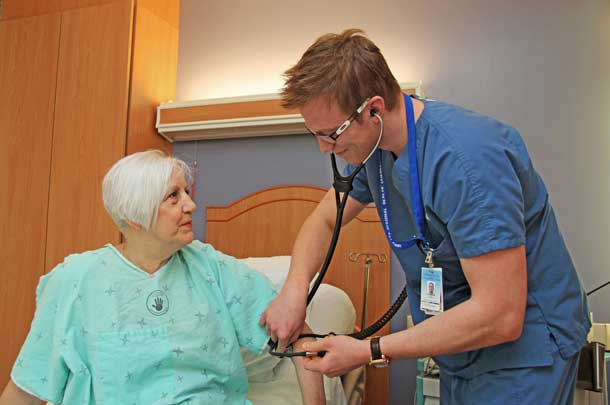

THUNDER BAY – Healthbeat – It’s kind of exciting to know that with the Northern Ontario School of Medicine (NOSM), the next generation of doctors are being trained right here in Northwestern Ontario. The program also helps keep those doctors here – students who train in the region are much more like to stay and practice in the region.
But did you know that your level of care may actually improve when your doctor has a student or resident in the room?
Medical Students the Next Generation of Healthcare
“When we have a student or resident in our practice, we tend to explain the disease and its treatment more to both the student and the patient,” said Dr. Bill McCready, the Senior Associate Dean of NOSM’s West Campus and a nephrologist in Thunder Bay. “This results in increased patient satisfaction.”
That’s true for several reasons. The most obvious is the simple fact that you have two (or more) medical professionals providing you with care. This usually starts discussions about your care as the students ask questions – and as mentioned above, this leads to better understanding for you as well.
Patients also tend to get more time with their doctor if there is a student present. As with any profession, it takes more time to train a student than to just do it yourself, so doctors take this into consideration when accepting appointments. In this case that extra time is spent on you, so all the better.
One of the most important benefits of having a doctor who teaches is that he or she will likely have the latest information. New medical research, treatments, and other advances are happening daily, and it’s difficult for the individual doctor to keep up with everything. Most physicians see working with students and residents as one way to keep up-to-date.
Depending on the physician and circumstances, doctors with students may actually see more patients, which means you’ll get your appointment sooner. Although all medical learners work “under supervision” of a doctor, that doesn’t necessarily mean that the doctor is in the room at all times. Residents especially may do initial assessments or explain treatment options to one patient while the doctor is talking to another patient, allowing that physician to care for more patients in a day.
It’s important to note that a patient may decline having a student at any time, and doctors will certainly respect those wishes. However, once patients get over their initial worries and realize they will likely receive better care for all the reasons given above, they actually prefer having students in the room. Dr. McCready, who has helped train doctors in Thunder Bay since 1982, said that patients used to seeing learners with their doctors notice the difference.
“One physician told me a patient once asked, ‘Where is your student today? You know you are a much better doctor when you have a student,’” Dr. McCready said.
Graham Strong













